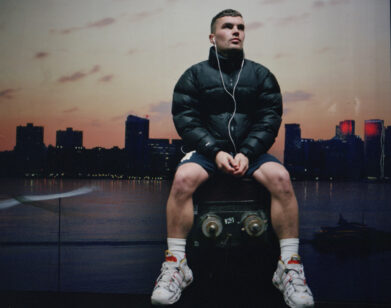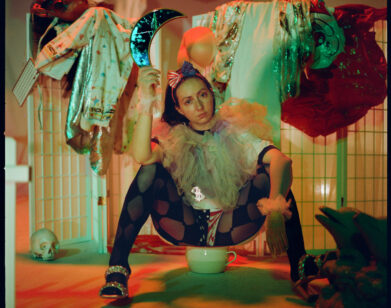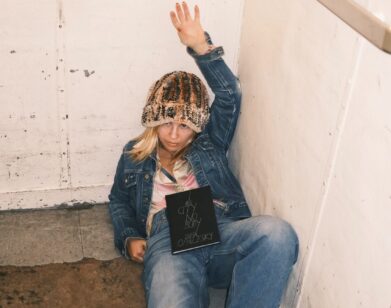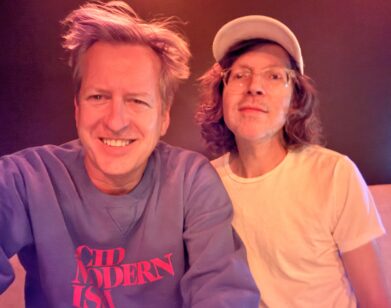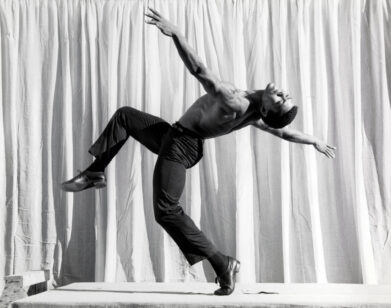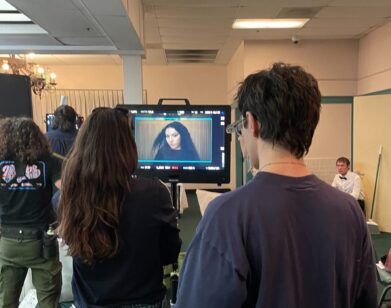Festival of Light
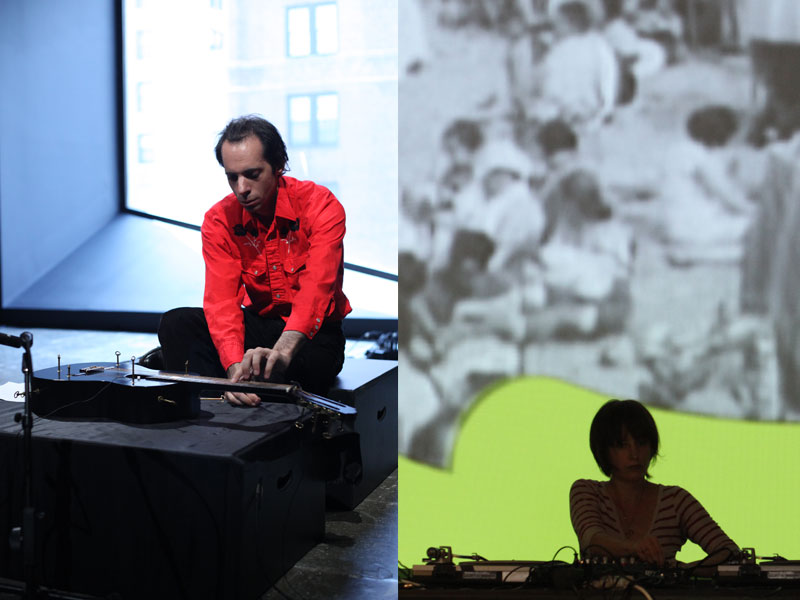
LEFT: ALAN LICHT PERFORMS WIND UP GUITAR (1994), RIGHT: MARINA ROSENFELD PERFORMS SCREEN PLAY (2005). PHOTO BY PAULA COURT
“Festival,” the exhibition and programmed stage set by Christian Marclay, which opened at the Whitney earlier this month, follows in the footsteps of MoMA’s showing of Abramovic and the Guggenheim’s Sehgal, in that it contextualizes live performance within the museum. The differentiating aspect, however, is music.
Marclay, who works between sound and its visual corollaries, made his name in the downtown scene of the early 80s, wherein serious-minded art rock mingled with nascent hip-hop, and graffiti was suddenly a commodity in SoHo’s galleries. Marclay’s initial materials were disused vinyl records, adorned with paint and collage techniques and then spun much like a DJ, but in a more radical and artified manner, contextualizing ideas of “scratching” and “sampling” within the rubric of academic composition, and foreshadowing the experimental turntablism movement of the 90s (typified by DJs Shadow and Spooky). His practice eventually expanded to include the graphic score, an approach pioneered by the post-serial composers of the 50s and 60s–New Yorkers like John Cage and Morton Feldman, and widely across Europe, too, most expertly by Cornelius Cardew and Roman Haubenstock–Ramati, both accomplished graphic artists. Instead of notating pitches and rhythms, these composers began to offer more abstract visual cues for their performers–dots, squiggles and boxes–allowing for a more improvisatory approach to the creation of music and a greater possibility of the unexpected. The graphic score also marries music to the realm of visual art, and Marclay’s approach has been to push its boundaries even further by realizing many of his own scores on video.
The fourth floor galleries of the Whitney are transformed into an ersatz music venue, with folding chairs strewn about and a number of the video scores installed along the periphery. Exhibition curators David Kiehl and Limor Tomer have worked with Marclay to enlist roughly 50 of New York’s most accomplished interpreters of avant-garde music to rotate in and out of the individual compositions over the course of the show’s run. A visit during opening week offered a performance of Screen Play (2005) by guitarist Elliott Sharp, Chinese pipa player Min Xiao Feng, and turntablist Maria Chavez, but a subsequent stab at the same work saw Chavez playing with two other electronic sound artists, including the ever-entrancing Marina Rosenfeld. Thurston Moore and Lee Ranaldo of Sonic Youth are performing throughout the summer, as is preeminent vocalist Joan La Barbara. Guitarist and sound-art historian Alan Licht proudly sent an announcement of his six appearances to his email list. Overall, it’s an incredibly focused gaze into New York’s experimental music community, and Marclay’s scores are open enough to allow each performer’s individuality to come across.
MORE DETAILS ON THE MUSICIANS, SCORES AND SCHEDULES AVAILABLE VIA THE WHITNEY, LOCATED AT 745 MADISON AVENUE, NEW YORK.

